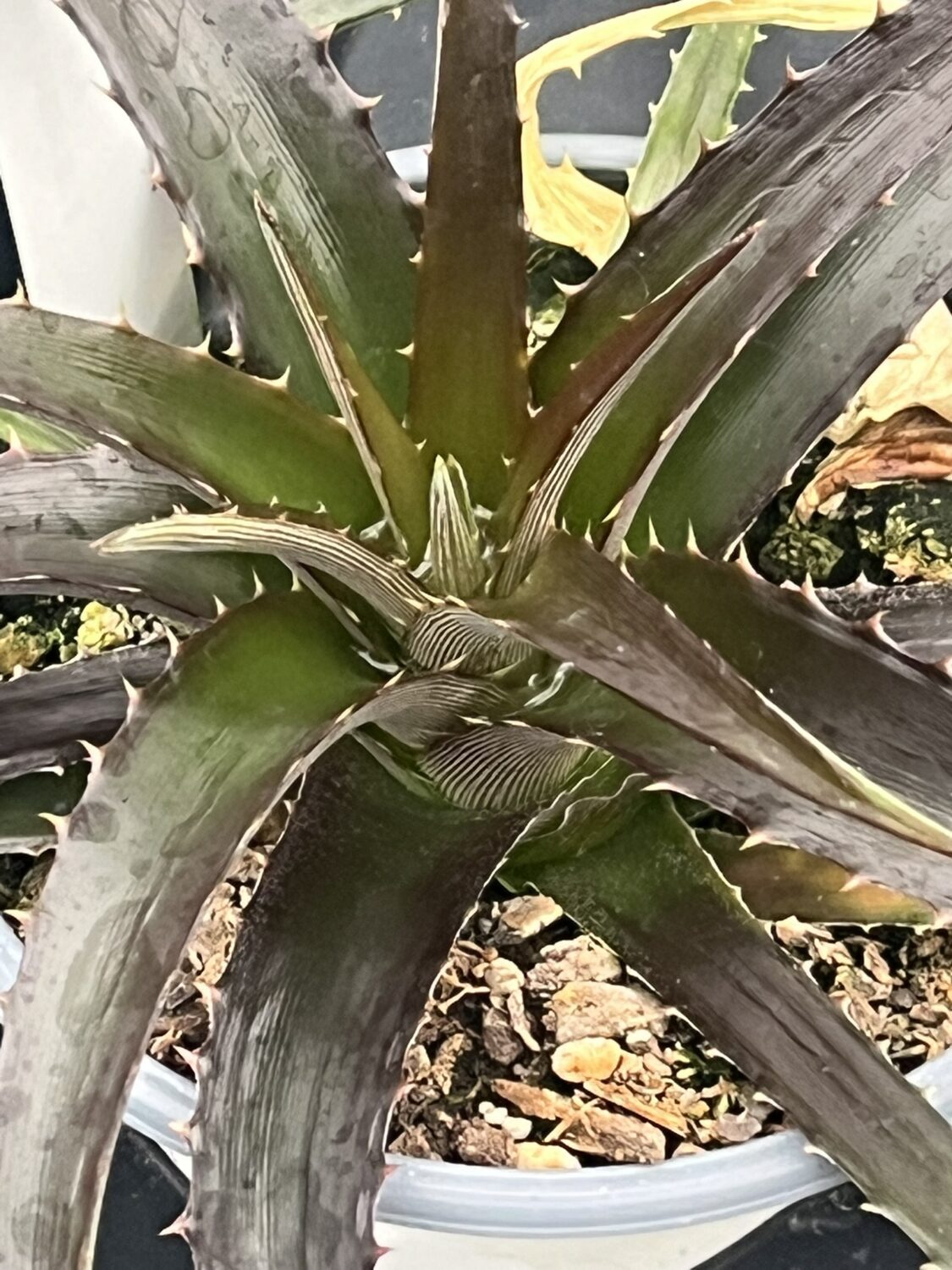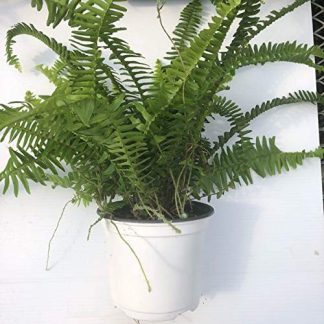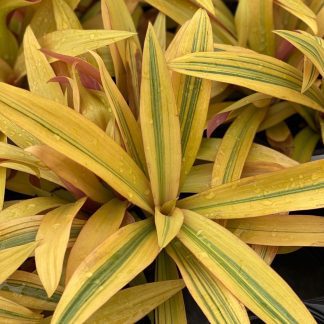Description
Dyckia fosteriana ‘Grape Jelly’: A Unique and Stunning Addition to Your Garden
Dyckia fosteriana ‘Grape Jelly’ is a bromeliad that stops you in your tracks. Its deep purple and burgundy leaves shimmer in the sun, creating a look as rich as its name. Native to Brazil, this tough and beautiful plant thrives in places where others struggle. It is part of the Dyckia genus, a group known for their spiky rosettes and incredible drought tolerance.
This is not just a plant for collectors. It’s perfect for anyone who wants a bold focal point that is also easy to grow. Whether you place it in a garden bed, rockery, or container, it brings texture and drama that few other plants can match.
Let’s explore what makes ‘Grape Jelly’ so special and how to keep it thriving year after year.
What Makes ‘Grape Jelly’ Stand Out
Foliage That Shines
The leaves are the star of this plant. Their color shifts from rich purple to deep burgundy, often dusted with a silver sheen. The more sun it receives, the richer the color becomes.
Spiky Rosette Form
‘Grape Jelly’ forms a symmetrical rosette with sharp, pointed leaves. This sculptural shape adds architecture to any garden space.
Tough as Nails
This plant loves heat and tolerates dry conditions with ease. Once established, it needs very little water, making it ideal for xeriscaping or low-maintenance designs.
Surprise Blooms
Though the foliage steals the show, ‘Grape Jelly’ also sends up flower spikes with bright orange or yellow blooms. These add a cheerful burst of color and attract pollinators.
Ideal Growing Conditions
Sunlight
Full sun brings out the best color. Aim for six or more hours of direct sunlight each day. It can tolerate light shade, but the purple tones may fade.
Temperature
Hardy in USDA zones 9 to 11, this plant handles heat and brief cold snaps down to about 20°F (-6°C). In colder climates, grow it in a pot and bring it indoors during winter.
Soil
Excellent drainage is key. A cactus or succulent mix works well. If planting in the ground, mix in sand or grit to keep water from sitting around the roots.
Humidity
Moderate humidity is fine, but this plant also does well in dry air. It doesn’t need misting unless conditions are extremely arid.
How to Plant and Grow ‘Grape Jelly’
Propagation
The easiest way to grow more Dyckia is by separating offsets, often called pups. These form around the base of the main plant. Wait until pups are about one-third the size of the parent before removing and replanting them.
Seeds are another option, but they germinate slowly and are less common in home gardens.
Planting
Choose a container with drainage holes or a well-draining garden bed. Set the plant so the base of the rosette sits slightly above the soil line. Do not bury it too deep.
Watering
Follow a “soak and dry” routine. Water deeply, then allow the soil to dry completely before watering again. In warm months, this may mean weekly watering. In winter, water every two to three weeks. Avoid letting water sit in the center of the rosette.
Fertilizing
Feed monthly during spring and summer with a balanced liquid fertilizer at half strength. Skip feeding during fall and winter when growth slows.
Pruning
Trim away dead or damaged leaves as needed. Wear gloves — the spines are sharp. Check occasionally for pests, though this plant is usually trouble-free.
Caring for Established Plants
Repotting
Repot every two to three years, or sooner if offsets crowd the container. Spring is the best time to do this, giving the plant a fresh start for the growing season.
Pest and Disease
‘Grape Jelly’ is naturally resistant but can occasionally attract mealybugs or spider mites. Treat infestations with insecticidal soap or neem oil. Good airflow helps prevent fungal problems.
Cold Protection
In areas with frost, cover outdoor plants with frost cloth or move pots inside. Prolonged freezing can cause leaf damage or death.
Creative Ways to Use ‘Grape Jelly’
Rock Gardens
Its bold form and drought tolerance make it perfect for rocky landscapes and dry slopes.
Container Displays
Show off its dramatic color in decorative pots on patios, decks, or balconies.
Mixed Plantings
Combine it with agaves, aloes, or ornamental grasses for a striking contrast in both color and texture.
Garden Borders
Use it along paths or as a low hedge to create a spiky, colorful edge.
Troubleshooting Common Issues
Pale or Green Leaves
Likely caused by low light. Move the plant to a sunnier spot to restore its purple hue.
Rotting Base
Usually from overwatering or poor drainage. Let soil dry out fully and consider repotting into a faster-draining mix.
Stunted Growth
Often due to nutrient deficiency. Begin monthly feeding during the growing season to boost vigor.
Why Gardeners Love Dyckia fosteriana ‘Grape Jelly’
This plant is more than just beautiful. It is forgiving, adaptable, and thrives where many plants fail. It suits modern landscapes, desert gardens, and even small urban balconies. Whether you are an experienced collector or just starting with hardy ornamentals, ‘Grape Jelly’ adds drama without demanding constant attention.
With the right care, it will reward you with year-round color and bold texture. Over time, it multiplies, giving you more plants to share or expand your garden display.
A Plant That Keeps Giving
Dyckia fosteriana ‘Grape Jelly’ is a showpiece that doesn’t fade with the seasons. Its jewel-toned leaves stay striking year-round, and its easygoing nature makes it a plant you’ll keep for years. If you want something hardy yet unforgettable — a plant that thrives in sun, survives drought, and looks stunning in any setting — this is it.
Bring home ‘Grape Jelly’ and let it transform your garden into something extraordinary.




